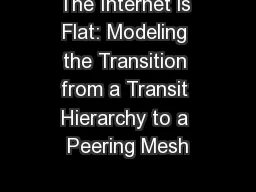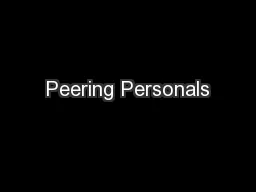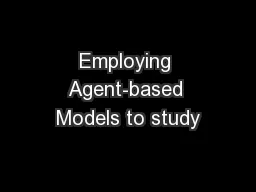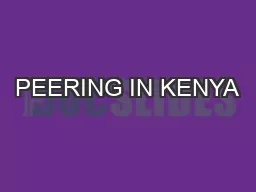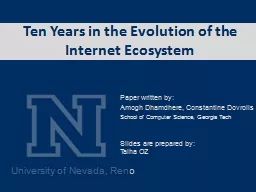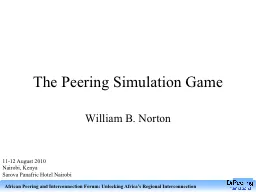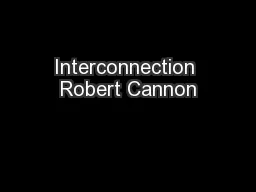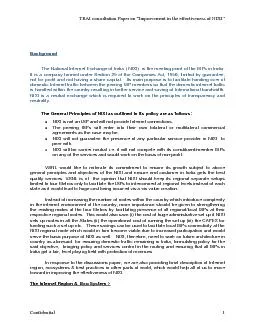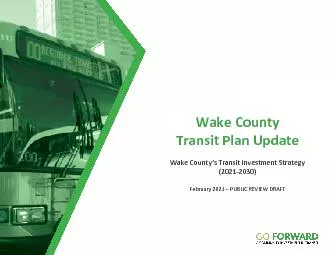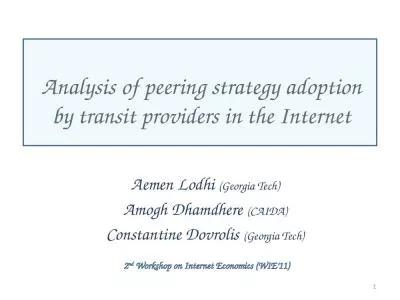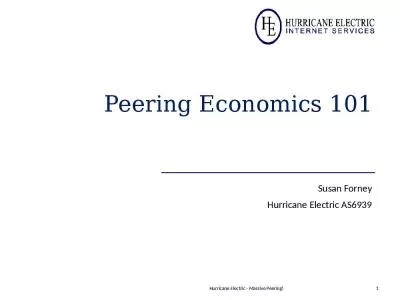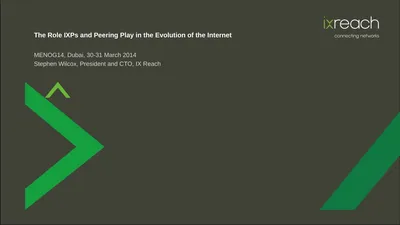PPT-The Internet is Flat: Modeling the Transition from a Transit Hierarchy to a Peering Mesh
Author : natalia-silvester | Published Date : 2018-10-22
Amogh Dhamdhere CAIDAUCSD Constantine Dovrolis Georgia Tech 1222010 1 The Internet Ecosystem More than 30000 autonomous networks independently operated and
Presentation Embed Code
Download Presentation
Download Presentation The PPT/PDF document "The Internet is Flat: Modeling the Trans..." is the property of its rightful owner. Permission is granted to download and print the materials on this website for personal, non-commercial use only, and to display it on your personal computer provided you do not modify the materials and that you retain all copyright notices contained in the materials. By downloading content from our website, you accept the terms of this agreement.
The Internet is Flat: Modeling the Transition from a Transit Hierarchy to a Peering Mesh: Transcript
Download Rules Of Document
"The Internet is Flat: Modeling the Transition from a Transit Hierarchy to a Peering Mesh"The content belongs to its owner. You may download and print it for personal use, without modification, and keep all copyright notices. By downloading, you agree to these terms.
Related Documents

